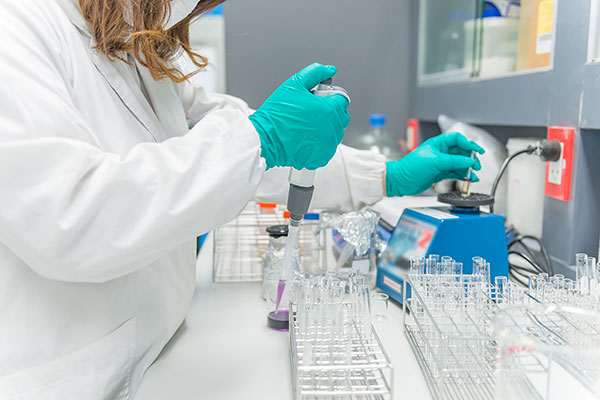Cyanine
Customized Fluorescent Reagents
One-stop Solution for Your Research
BOC Sciences offers a one-stop solution for fluorescent reagents, providing custom synthesis, modification, and large-scale production services. Our comprehensive portfolio includes high-purity fluorescent dyes, probes, and labeling reagents for research and industrial applications, ensuring superior performance and reliability.
Explore More

Background
BOC Sciences is committed to providing customers with high-quality cyanine dyes. The advantages of cyanine dyes include large molar extinction coefficient and wide spectral range. Cyanine dyes are widely used in the analysis and detection of proteins and nucleic acids.
Background
Fluorescent probes with good spectral performance can meet the needs of ever-changing biological analysis applications. Currently, rhodamine dyes, fluorescein dyes, BODIPY dyes and cyanine dyes are the most commonly used fluorescent dyes. The spectral range of most of the dyes is in the ultraviolet-visible region. In addition, many dyes have disadvantages such as poor biocompatibility and high toxicity.
Introduction of cyanine dyes
Cyanine dyes are a class of dyes that can increase the sensitivity of photosensitive materials. The molecular structure of cyanine dyes generally has two nitrogen atom centers, one of which exists in the form of a quaternary ammonium salt, and the middle is connected by a polymethine chain with a certain number of carbon atoms to form a larger conjugated plane structure. According to the number of carbon atoms in the polymethine chain, cyanine dyes can be divided into monomethine cyanine dyes, dimethine cyanine dyes (Cy2), trimethine cyanine dyes (Cy3), pentamethine cyanine dyes (Cy5), heptamethine cyanine dyes (Cy7), etc. Based on different chemical structures, the fluorescence emission range of cyanine dyes can almost cover from the ultraviolet region to the near-infrared region. Polymethine cyanine dyes have fluorescence emission in the near-infrared region, and have strong tissue penetration, which can effectively avoid the interference of biological autofluorescence, thereby improving the detection sensitivity and application range of fluorescent probes.
Application of cyanine dyes
Compared with other fluorescent dyes (such as rhodamine, fluorescein), cyanine dyes have a larger molar extinction coefficient and adjustable wavelength range (400-1000 nm), which makes the background weak and the signal strong during labeling. Cyanine dyes are mainly used in nucleic acid molecular recognition, protein labeling, ion and neutral small molecule detection, reactive oxygen detection, and live cell imaging.
Resources

- Hoechst Dyes: Definition, Structure, Mechanism and Applications
- Mastering the Spectrum: A Comprehensive Guide to Cy3 and Cy5 Dyes
- Fluorescent Probes: Definition, Structure, Types and Application
- Fluorescent Dyes: Definition, Mechanism, Types and Application
- Coumarin Dyes: Definition, Structure, Benefits, Synthesis and Uses
- BODIPY Dyes: Definition, Structure, Synthesis and Uses
- Cyanine Dyes: Definition, Structure, Types and Uses
- Fluorescein Dyes: Definition, Structure, Synthesis and Uses
- Rhodamine Dyes: Definition, Structure, Uses, Excitation and Emission
- Unlocking the Power of Fluorescence Imaging: A Comprehensive Guide
- Cell Imaging: Definitions, Systems, Protocols, Dyes, and Applications
- Lipid Staining: Definition, Principles, Methods, Dyes, and Uses
- Flow Cytometry: Definition, Principles, Protocols, Dyes, and Uses
- Nucleic Acid Staining: Definition, Principles, Dyes, Procedures, and Uses
- DNA Staining: Definition, Procedures, Benefits, Dyes and Uses
- Cell Staining: Definition, Principles, Protocols, Dyes, and Uses
- Ion Imaging: Definition, Principles, Benefits, Dyes, and Uses
- Fluorescent Labeling: Definition, Principles, Types and Applications
Online Inquiry

